His Divine Grace A.C. Bhaktivedanta Swami Prabhupada
The word Govinda refers to one who gives pleasure to the cows and the. senses. There are many incarnations of Godhead, but Govinda is the adi-purusa, or the original person. As such He is not technically an incarnation of God but is God Himself, the source of incarnations. Govinda is not some impersonal effulgence or void but a person complete in every respect. Unless the origin of everything is a person, how can so many persons or individual living entities—be they men, animals, demigods, trees or plants—exist all over the universe? Every living entity is an individual spirit soul, and every individual spirit soul is a person. How, then, can the origin of everything be impersonal and nothing more? Personal qualities must be there in Him, otherwise they cannot be reflected in this material world. This then is the conclusion of Lord Brahma in the verse Govindam adi-purusam tam aham bhajami. Lord Brahma is the original creature in this universe, and in Brahma-samhita he states that his origin is also a person. “I worship that original person,” he states throughout Brahma-samhita.
The whole world is laboring under the impersonal conception. No one actually knows anything, of course, but they have developed an impersonal philosophy by means of speculation. But how can this impersonalism stand?
It is contradicted at every step of our experience, for every individual entity is a person, and the complete whole from which all entities emanate is also a Person. Adi-purusam. This is the verdict of Lord Brahma, who, having created the universe, knows well what is within this universe. We have very little knowledge of what is within this Universe, and what is beyond is totally unknown to us. This is not the Case with Lord Brahma, however. Lord Brahma is adi-kavaye, which means that he is the original learned person, the creator of this universe. Tene brahma hrda ya adi-kavaye muhyanti yat surayah. (Bhag. 1.1.1). The origin of everything, the Absolute, the summum bonum, cannot be impersonal, for He is the origin of the person Brahma. We have no experience of a person coming from something impersonal; because my father is a person, I am also a person. If we trace back through our family trees, we will find that one person comes from another person, and somehow, if it were possible to trace our origins back to the beginning of creation, we will find the original person whom Brahma is praising. The origin of the universe is not void, nor is it some primeval muck, but the origin is a learned person.
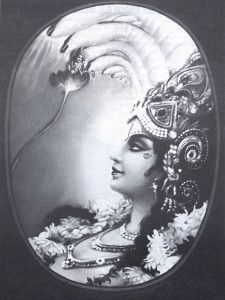
Brahma, being the first creature, received his knowledge from the original person, and that is described in Srimad-Bhagavatam. The word Brahma means jnana or knowledge. One may question how Brahma could learn from another person if he were the original creature in the universe. Who was the spiritual master who imparted knowledge to him? In Srimad-Bhagavatam it is indicated that that knowledge came from within the heart of Brahma. God is situated in everyone’s heart, and although Brahma was the first and only creature at the time, the other person, the adi-purusa, was within his heart. It is also stated in Bhagavad-gita that isvara, the Supreme Lord, is situated within everyone’s heart and is giving directions to everyone.
isvarah sarva-bhutanam
hrd-dese ‘rjuna tisthati
bhramayan sarva-bhutani
yantrarudhani mayaya
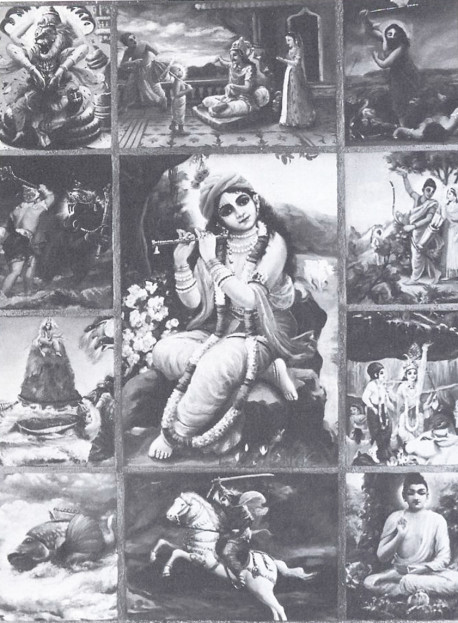
“The Supreme Lord is situated in everyone’s heart, O Arjuna, and is directing the wanderings of all living entities, who are seated as on a machine, made of the material energy.” (Bg. 18.61)
Those who are not devotees cannot understand how it is that Krsna or God is giving instructions from within the heart, but those who are devotees can understand. The devotees therefore are trying to hear the Lord from within, but in order to hear properly this special qualification is needed. One must be at a certain stage of spiritual advancement. In Bhagavad-gita Krsna indicates that to those who are devoted to Him, He gives the means whereby they can understand Him:
tesam satata-yuktanam
bhajatam priti-purvakam
dadami buddhi-yogam tam
yena mam upayanti te
“To those who are constantly devoted and worship Me with love, I give the understanding by which they can come to Me.” (Bg. 10.10)
The words tesam satata-yuktanam mean “to be engaged.” The devotees of Krsna engage full-time in devotional service out of love (priti-purvakam). The devotees always enjoy thinking, “Here is an opportunity to serve Krsna.” The more they engage in service, the more they are pleased and the faster they make advancement in spiritual life. There is no question of retirement. When we perform some material service, we get tired and think, “Oh, I have worked so much. Now let me take a vacation.” However, when one performs spiritual service, he actually gets more energy and says, “Let me serve more.” To such a sincere devotee, the Lord, sitting within the heart, gives instructions: “Do this, and you will very soon come to Me.” He also gives different instructions to others who do not want to turn to Him. “You want to do this? Here is your opportunity then. If you want to steal, then go ahead.” If we wish not to turn to Krsna, if we wish to forget Him completely, He will give us that facility, for He is always satisfying our desires. Consequently it is stated in Bhagavad-gita that He gives us remembrance of Himself and also allows us to forget, if that is our desire.
sarvasya caham hrdi sannivisto
mattah smrtir jnanam apohanam ca
vedais ca sarvair aham eva vedyo
vedanta-krd veda-vid eva caham
“I am seated in everyone’s heart, and from Me come remembrance, knowledge and forgetfulness. By all the Vedas am I to be known; indeed I am the compiler of Vedanta, and I am the knower of the Vedas.” (Bg. 15.15)
Ordinary persons cannot understand how God can be a person because they think, “God must be a person like me.” Therefore in some of the scriptures a personality is denied, for as soon as the foolish accept a personality, they think, “God is a person like me.” Therefore it is said, “God is not a person,” and in some religions, like the Judaic religion, even images of God in the form of pictures or statues are not allowed. But this is not to say that God is not a person at all. When it is said that God is not a person, we should understand that He is not a person like us. In actuality, He is a person, but He is a different kind of person. Isvarah paramah krsnah sac-cid-ananda-vigrahah: His personality is eternal; His body does not die like ours. His body is full of bliss, whereas our body is full of misery. His body is full of knowledge, whereas ours is full of ignorance. And He is isvara, the controller, whereas we are the controlled. How then can God be a person like us?
Because we are incapable of understanding how the Absolute Truth can be a person, we have to take lessons from Brahma, the supreme poet and sage of the universe who is the first created person. We are all in the Brahma-sampradaya, or the disciplic succession starting from Lord Brahma; therefore we accept Brahma’s statements and worship adi-purusam, Govinda. We may not know that adi-purusa, but if we follow in the footsteps of the acaryas, great spiritual teachers, we will not have difficulty. Govinda gives Brahma instructions from within his heart, and Brahma gives instructions to his disciple Narada, and Narada gives instructions to his disciple Vyasa. Vyasa’s disciple Madhvacarya repeats the same message, then Isvata Puri, and then his disciple Caitanya Mahaprabhu, then the gosvimis, etc. In this way knowledge is received by parampard, step by step in the disciplic succession. When the same message is repeated without deviation, the knowledge is transmitted perfectly.
From the sastras or scriptures we learn that the adi-purusa or original person expands Himself in many incarnations. These incarnations are diverse, and their activities are described in Srimad-Bhagavatam. On one occasion Lord Krsna incarnated as a boar, Varaha, and lifted the world up when it was merged within the waters of the Garbhodaka Ocean. The demon Hiranyaksa pushed the earth within the watery half of the universe, and Lord Krsna, in the shape of a boar, not only delivered the planet but annihilated the demon. On another occasion the Lord appeared as a small fish in a water pot, and as time elapsed this fish got bigger and had to be taken to a reservoir. The fish kept increasing in size, and when He was quite huge He informed Manu, “Devastation is coming. Take all the Vedas and put them in a boat, and I shall protect them.” Therefore Jayadeva Gosvami sings in his prayer, “My Lord, in the shape of a fish You saved the Vedas when there was devastation.” The incarnations of Godhead are described in prayers offered by Jayadeva Gosvami, a Vaisnava poet who appeared about seven hundred years before Lord Caitanya. Jayadeva was a great devotee, and he wrote a very famous song about the Lord called Gita-govinda. He offers another prayer to the tortoise incarnation. Once the demons and demigods were using a great hill as a churning rod and were churning the ocean with it. The resting place of the churning rod was the shell of the tortoise incarnation. Jayadeva Gosvami therefore prayed: “You appeared as a tortoise just to be a resting place for the churning rod. Your back itched, and You accepted this hill as a rod to scratch the itch.”
In another incarnation, Nrsimhadeva, the Lord appeared in order to save Prahlada Maharaja, a five-year-old boy who was being tortured by his atheistic father. The Lord appeared from a pillar of the father’s palace as a half-man, half-lion. Prahlada’s father, Hiranyakasipu, had received benediction from Lord Brahma that assured him that he would not be killed by any man or animal, so the Lord appeared neither as man nor as animal. We often think that we can thus cheat the Lord by our intelligence, but the Lord is more intelligent than we.
In another incarnation the Lord appeared as Vamana, a dwarf. Lord Vamana appeared before Bali Maharaja, who had conquered all the universal planets and had thus disturbed the demigods. Vamana said, “I am a brahmana, and I have come to beg from you.” Bali Maharaja said, “Yes, I’ll give You what You want.” The dwarf asked for only three feet of land, and Bali Maharaja granted His wish. Vamanadeva then took one step and covered half the universe, and then He took another step and covered the other half. Bali Maharaja then said, “There is no place for You to take the third step, so please place Your foot on my head.” In another incarnation, as Parasurama, the Lord killed all of the ksatriya kings twenty-one times because of the kings’ dishonesty. From the history of the Mahabharata, it can be understood that at that time some of the ksatriyas fled and took shelter in Europe, and consequently modern Europeans are descendants of those ksatriyas. As Lord Rama, the Lord fought with Ravana, a demon with ten heads, and ruled the earth as an ideal king. As Balarama, the elder brother of Krsna and the incarnation of Sankarsana, the Lord was very beautiful, white in complexion, and He wore blue garments. Once He became angry with the Yamuna River, and He threatened to dry it up. Out of fear of Balarama, the Yamuna agreed to cooperate with Him. As Lord Buddha, the Lord destroyed the Vedic principles with flawless logic and is therefore considered an atheist. Lord Buddha, however, was an incarnation of Krsna, and he denied the Vedas in order to save animals which were being sacrificed according to the injunctions of the Vedas. In the name of Vedic sacrifice, people were improperly killing animals, and the Lord, as Lord Buddha, appeared to preach nonviolence.
At the end of this age, Kali-yuga, the Lord will appear as Kalki. According to the Vedas, Kalki will appear 427,000 years from now, and His mission will simply be to kill. Lord Krsna gave instructions in the form of Bhagavad-gita, but Lord Kalki will not give any instructions. At the end of Kali-yuga people will be so degraded that they will not be able to understand any instructions; therefore the only recourse will be to kill them. One who is killed by the Lord attains salvation. This is one of the Lord’s all-merciful qualities; whether He protects or kills, the result is the same. Thus Kalki will appear at the last stage of Kali-yuga and annihilate everything, and after that time, Satya-yuga (the Golden Age) will begin again.
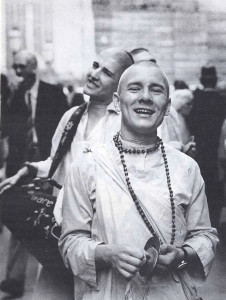 In this way we can see that God is not only a person as the adi-purusa, the original person, but that He manifests Himself throughout the universe in innumerable incarnations and expansions which are also personal in quality.
In this way we can see that God is not only a person as the adi-purusa, the original person, but that He manifests Himself throughout the universe in innumerable incarnations and expansions which are also personal in quality.
Despite all this, we often challenge the Lord and say, “There is no God,” or “I am God,” or even “I don’t care for God.” Despite this attitude, which is typical of this age, God is there, and we can see Him at every moment. If we deny God’s personality, then He will be present before us as cruel death. In Bhagavad-gita there are instructions teaching us how we can gradually understand God and see Him personally, face to face. In Bhagavad-gita, the Supreme Personality of Godhead Himself states, “I am the taste of water, I am the sunlight, I am the moonlight, I am the vibration of sound in the sky, and amongst great personalities I am the greatest.” If anyone is actually serious about understanding God, or the science of God, he can follow the injunctions given in Bhagavad-gita and realize God in so many ways. Everyone is tasting water daily, so if we remember that God is the taste of water, then God realization begins. Who has not seen the moon or the sun? And who has not heard sound vibrating in the air? In so many ways we can see, feel and hear God. Everyone sees God at every moment, but the atheists claim they do not see Him because He does not exist.
Without God consciousness, or without Krsna consciousness, there cannot be any peace. Everyone is hankering after peace, but no one knows how to achieve it. Therefore this Krsna consciousness movement is promoting the greatest welfare work in the world. The process of understanding this science of Krsna is made very easy in this age by Lord Caitanya Mahaprabhu through the chanting of the holy names of God, Hare Krsna, Hare Krsna, Krsna Krsna, Hare Hare/ Hare Rama, Hare Rama, Rama Rama, Hare Hare. In the Vedas it is stated that in this age people are so fallen that they cannot realize God by any of the prescribed methods; therefore it is recommended that by chanting the holy names of God in this age one can get all the benefits derived in previous ages from meditation, temple worship and sacrifice. Lord Caitanya Mahaprabhu, who is Krsna Himself, instructs us that the holy name of God is nondifferent from the Supreme Lord; therefore all the energy that God has is also there in His holy name. Now on the absolute platform there is no difference between the word and its referent; therefore there is no difference between the holy name of God and God Himself.
Caitanya Mahaprabhu said that there are no hard and fast rules for chanting the name of God, and therefore the names can he chanted anywhere and everywhere. In this age the blind are following the blind, for no one knows the aim and objective of human society or the perfection of human life. Life is perfected through self-realization and the reestablishment of our lost relationship with the Supreme Personality of Godhead. This Krsna consciousness movement is attempting to enlighten human society on this important point. According to Vedic civilization, the perfection of life is to realize one’s relationship with Krsna. From Bhagavad-gita we can understand that all living entities—not only human beings, but animals and lower life forms-are parts and parcels of God. The parts of anything are meant to serve the whole, just as the hands are meant to serve the body. Similarly, as living entities that are part of God, we are duty bound to serve Him.
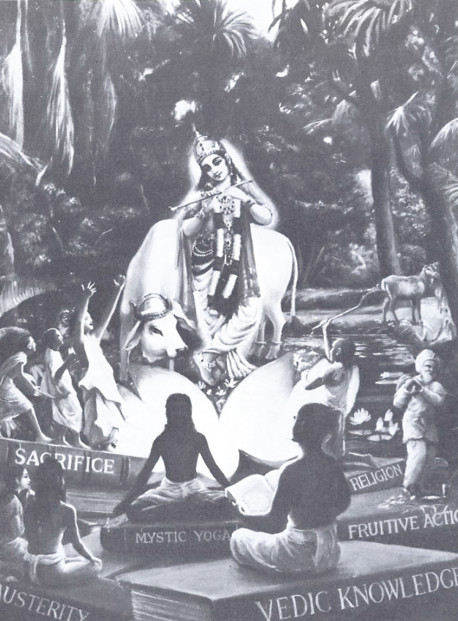
Actually our position is that we are always rendering service to someone. We are always serving our bodies and the extensions of our bodies in the form of family, society, country and so on. If a person has no one to serve, he sometimes keeps a pet cat or dog and renders service unto it. Constitutionally we are made to render service to the Supreme Person, but when we deny that person we are forced to render service to something else. In any case, the rendering of service will be there, and that rendering of service is called sanatana-dharma, or the eternal activity or occupation of the living entity. On the material platform, despite rendering service to our best capacity, we are never satisfied, nor is the person to whom we are rendering that service satisfied. In the material conception, everyone is frustrated, because the service rendered is not properly directed. If we want to render service to a tree, we must water its roots, not just its branches and leaves. Similarly, if the stomach is given food, all the other parts of the body are nourished. We should understand therefore that if the Supreme Personality of Godhead is served, all His parts and parcels will be satisfied also. Therefore all welfare activities, including all service to society, family and nation, are perfected by serving the Supreme Personality of Godhead.
In a conversation with his disciple, Narada Muni, Lord Brahma made the following statement: “The Vedic literatures are made by and are meant for the Supreme Lord. The demigods are also meant to serve the Lord as parts of the body, the different planets are also meant for the sake of the Lord, and different sacrifices are performed just to please Him. All different types of meditation or mysticism are meant for realizing Him. All austerities are aimed at achieving Him. Culture of transcendental knowledge is for getting a glimpse of Him, and ultimately salvation is in entering His kingdom.” (Bhag. 2.5.15-16) By following in the footsteps of Lord Brahma, we can attain that ultimate salvation and glimpse that Supreme Person worshiped by Lord Brahma and all other demigods in the universe.

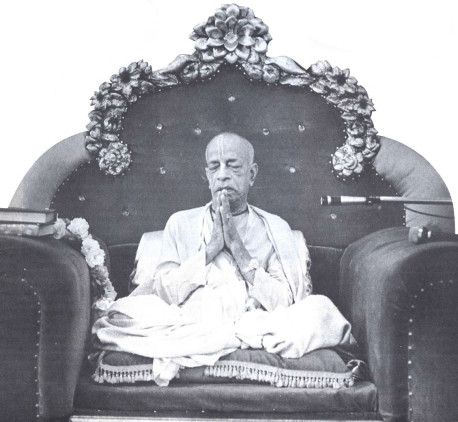
Leave a Reply